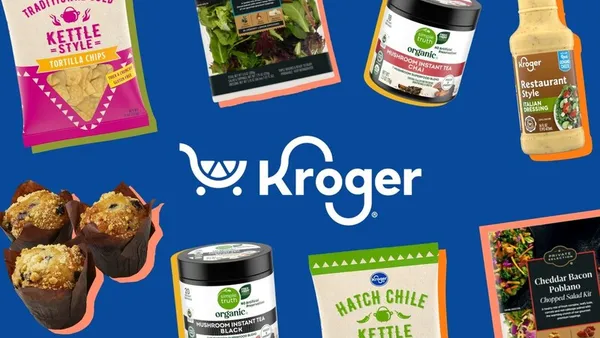Dive Brief:
- Frozen food sales in the U.S. rose 7.9% over the 12 months that ended July 2, to $74.2 billion, but unit sales were off by almost 5%, according to research released Tuesday by FMI – The Food Industry Association and the American Frozen Food Institute.
- Traditional supermarkets control more than 40% of the frozen food market – the largest share among all retail segments — but are losing ground to mass merchants and supercenters, the organizations reported.
- Retailers are facing challenges in boosting frozen food sales as shoppers reduce the number of shopping trips they make and focus on reducing their spending to counter inflation.
Dive Insight:
People who rely heavily on frozen goods have a considerably more favorable opinion of the category than shoppers who purchase those products less frequently, FMI and AFFI found.
About 38% of shoppers consume frozen foods daily or every few days, a figure that is in line with findings from 2021, according to the trade groups’ Power of Frozen in Retail report. Those shoppers, known as core consumers, tend to look for new frozen options in stores and have plenty of freezer space in their homes. They also specifically plan meals around frozen options.
About 66% of core consumers believe that the frozen section offers a “wide variety” of better-for-you choices, according to the research, which reflects responses collected online in August from 1,736 consumers who eat frozen foods at least every few weeks. They are also more apt to feel that frozen goods like berries are at least as nutritious as their non-frozen counterparts.
In a reflection of the disparity between the amount of money people are spending on frozen products and the quantity of those goods they are buying, frozen meals generated sales that were up 8.3% even as the number of units fell 5.6%. Processed meat and poultry saw sales rise 19.6% in terms of dollars but decline 8.1% in units.
The findings from FMI and AFFI follow data published in February by business solutions provider Advantage Solutions showing that a fifth of shoppers planned to buy fewer frozen foods during the next several months while just 10% expected to buy more.
In addition to being more enthusiastic about frozen products than other shoppers, core consumers are also more likely to head to retailers like Walmart and Target than traditional grocery stores to buy those goods. Forty-three percent of core consumers turn to mass retailers to make frozen purchases, compared with 37% of shoppers overall.
Traditional grocers accounted for 37.6% of dollar sales in the frozen category during the 12 months covered by the research, the largest percentage among all retailer types. But that figure is off from 40.8% in 2020 while the share for mass retailers and supercenters has risen to 27.2% from 24.7% over the same period.
The research also found that the share of online grocery shoppers who buy frozen foods through e-commerce channels is rising. Eight-six percent of shoppers who have bought groceries online purchased frozen products, up from 82% in 2020.













